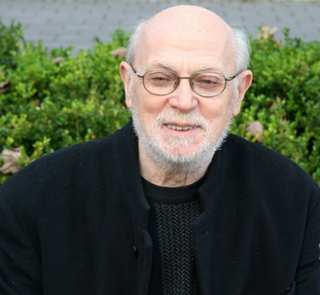"A Place to Stand, a Place to Grow" (Ontari-ari-ari-o!) is the unofficial provincial anthem of the Canadian province of Ontario. It was written as the signature tune for a movie of the same name that was featured at the Expo 67 Ontario pavilion.
The song was written by Dolores Claman, who also wrote "The Hockey Theme", with lyrics by Richard Morris and orchestrations by Jerry Toth. Lyrics for a French version were written by Larry Trudel. [1]
It was commissioned by the Progressive Conservative government of John Robarts for the Ontario pavilion at Expo 67, the World's Fair held in Montreal, Quebec in Canada's centennial year of 1967, and was used again in the following decades.
The song was featured at the Province of Ontario's exhibit in the short film A Place to Stand , which won the 1967 Academy Award for Live Action Short Film. The Government of Ontario maintains three versions of the song, an English, French, and a bilingual version that incorporates both English and French. [2]

The 1967 International and Universal Exposition, commonly known as Expo 67, was a general exhibition from April 28 to October 29, 1967. It was a category one world's fair held in Montreal, Quebec, Canada. It is considered to be one of the most successful World's Fairs of the 20th century with the most attendees to that date and 62 nations participating. It also set the single-day attendance record for a world's fair, with 569,500 visitors on its third day.
The CTV Television Network, commonly known as CTV, is a Canadian English-language terrestrial television network. Launched in 1961 and acquired by BCE Inc. in 2000, CTV is Canada's largest privately owned television network and is now a division of the Bell Media subsidiary of BCE. It is Canada's largest privately or commercially owned network consisting of 22 owned-and-operated stations nationwide and two privately owned affiliates, and has consistently been placed as Canada's top-rated network in total viewers and in key demographics since 2002, after several years trailing the rival Global Television Network in key markets.
Sidney M. Cohen is a Canadian television director specializing in live multi-camera productions requiring minimal editing and is also a TV program creator.
CJOH-DT is a television station in Ottawa, Ontario, Canada, serving the National Capital Region as part of the CTV Television Network. It is owned and operated by network parent Bell Media alongside Pembroke-licensed CTV 2 outlet CHRO-TV. The two stations share studios with Bell's Ottawa radio properties at the Market Media Mall building on George Street in downtown Ottawa's ByWard Market; CJOH-DT's transmitter is located on the Ryan Tower at Camp Fortune in Chelsea, Quebec, north of Gatineau.

The Canadian Centennial was a yearlong celebration held in 1967 to celebrate the 100th anniversary of Canadian Confederation. Celebrations in Canada occurred throughout the year but culminated on Dominion Day, July 1. Commemorative coins were minted, that were different from typical issues with animals on each — the cent, for instance, had a dove on its reverse. Communities and organizations across Canada were encouraged to engage in Centennial projects to celebrate the anniversary. The projects ranged from special one-time events to local improvement projects, such as the construction of municipal arenas and parks. The Centennial Flame was also added to Parliament Hill. Children born in 1967 were declared Centennial babies.

CHAN-DT, branded Global British Columbia or Global BC, is a television station in Vancouver, British Columbia, Canada, serving as the West Coast flagship of the Global Television Network. Owned and operated by network parent Corus Entertainment, the station has studios on Enterprise Street in the suburban city of Burnaby, which also houses Global's national news headquarters. Its transmitter is located atop Mount Seymour in the district municipality of North Vancouver.

Sorel Etrog, was a Romanian-born Israeli-Canadian artist, writer, and primarily, a sculptor. He specialized in modern art works and contemporary sculpture. Etrog's works explore his first-hand experience of the Second World War, the renewal of sculptural traditions in modern art, such as the use of bronze as a medium, and the opposition between the mechanical and the organic. One of Canada's leading artists in the 1960s, Etrog contributed to the country's growing interest in sculpture.
Television in Canada officially began with the sign-on of the nation's first television stations in Montreal and Toronto in 1952. As with most media in Canada, the television industry, and the television programming available in that country, are strongly influenced by media in the United States, perhaps to an extent not seen in any other major industrialized nation. As a result, the government institutes quotas for "Canadian content". Nonetheless, new content is often aimed at a broader North American audience, although the similarities may be less pronounced in the predominantly French-language province of Quebec.
"The Hockey Song", sometimes mistakenly called "The Good Old Hockey Game", is a song written and originally performed by Canadian folksinger Stompin' Tom Connors. The song's first release was on Connors' 1973 album, Stompin' Tom and the Hockey Song. The song was played at Ottawa Senators games in 1992, after which Pat Burns, then coach of the Toronto Maple Leafs, insisted it be played in Toronto as well. The song is now played throughout both Canadian and American NHL arenas, as well in the home arenas of European hockey teams.
Dolores Olga Claman was a Canadian composer and pianist. She is best known for having composed the 1968 theme song for Canadian Broadcasting Corporation's (CBC) Hockey Night In Canada show, known simply as "The Hockey Theme", which many consider Canada's unofficial second national anthem. She is also known for "A Place to Stand", the tune that accompanied the film of the same name at Montreal's Expo 67 Ontario pavilion. This is regarded as Ontario's de facto provincial anthem.
Ontario is a province of Canada that has established several official emblems and symbols to reflect the province's history, natural resources, and its people. In addition to official symbols, several other emblems and symbols exist that are commonly associated with the province.

The Expo 67 International and Universal Exposition featured 90 pavilions representing Man and His World, on a theme derived from Terre des Hommes, written by the famous French pilot Antoine de Saint-Exupéry.
Vehicle registration plates of Canada, also known as licence plates, are issued by provincial or territorial government agencies. Registration plates in Canada are typically attached to motor vehicles or trailers for official identification purposes. Some Canadian registration plates have unique designs, shapes, and slogans related to the issuing jurisdiction. For example, registration plates issued in the Northwest Territories are shaped like a polar bear. In Alberta, registration plates typically display the words "Wild Rose Country."
In Canada, licence plate numbers are usually assigned in ascending order, beginning with a starting point such as AAA-001.

The Canadian province of Ontario first required its residents to register their motor vehicles in 1903. Registrants provided their own licence plates for display until 1911, when the province began to issue plates. Plates are currently issued by the Ministry of Transportation of Ontario (MTO). The location of plates is specified by the Highway Traffic Act and Regulation 628 under the Act.
A Place to Stand is a 1967 film produced and edited by the Canadian artist and filmmaker Christopher Chapman for the Ontario pavilion at Expo 67 in Montréal, Québec, Canada. For the film, he pioneered the concept of moving panes, of moving images, within the single context of the screen. At times there are 15 separate images moving at once. This technique, which he dubbed "multi-dynamic image technique" has since been employed in many films, notably Norman Jewison's 1968 film The Thomas Crown Affair. Jewison has credited Chapman as the creator of the edit style. The technique can also be seen more recently on television in the series 24.

Patriotic music in Canada dates back over 200 years as a distinct category from British or French patriotism, preceding the first legal steps to independence by over 50 years. The earliest, "The Bold Canadian", was written in 1812.

On October 17, 2018, cannabis was legalized in Canada for recreational and medical purposes. It was already legal for medicinal purposes, under conditions outlined in the Marihuana for Medical Purposes Regulations issued by Health Canada, and for seed, grain, and fibre production under licence by Health Canada.
As of October 2021, there were about 67,000 electric vehicles in Ontario. As of 2021, about 3% of new vehicle registrations in Ontario were electric.